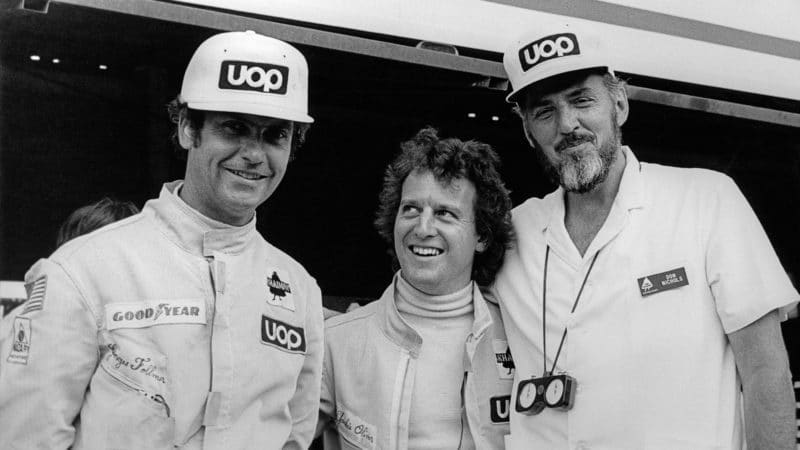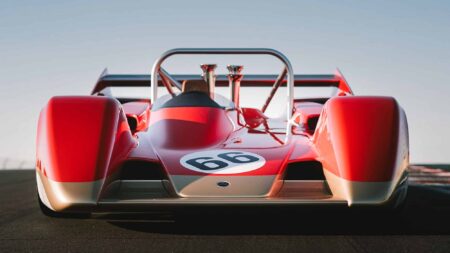Before the ’73 season was over, Nichols had started singing from the same drawing board as Southgate. For the next season, he declared, Shadow needed something small, light and non-turbo. And that’s exactly what emerged from Northampton.
“It was totally new,” says Southgate, “though it looked like a seven-eighths scale DN2. It ran on little 13-inch wheels and was based on the DN3 F1 car; look at the suspension components and the monocoque and it obviously came from the same office.”
The small-and-light cause was helped by considerable shrinking of the fuel tanks: Can-Am had introduced new ‘energy measures’ for 1974 which stipulated three mpg as the minimum efficiency of any competitor’s engine. Very worthy, for sure. The surely intentional side-effect, however, was that the dominant Porsche turbos had to run their boost at a level where their power outputs were on par with the big-block Chevys.
Porsche turned on their heel and left the Can-Am scene; McLaren and Lola weren’t tempted back — and so Shadow faced 74 with two cars and no works opposition. And, tragically, without Peter Revson. Having signed up to the squad’s Formula 1 and Can-Am campaigns, the dashing American was killed in an accident during pre-season F1 testing at Kyalami.

Follmer was champion in ’72, but found things more difficult two years later
Getty Images
Shadow’s Can-Am operation did, however, gain Mike Hillman, who’d worked with Southgate at Brabham. Hillman had chosen a new direction in life, moving away from design and into team management. He soon proved an enormous boon.
“Well, obviously, the DN4 was a tremendous car,” he states, “and the fact that it was constructed in only 90 days meant it was ready long before the Can-Am season started in June. So I was determined to grab this opportunity to make the car absolutely bulletproof, and to this end we spent a week at Riverside and put about 1800 miles on the car. Lee Muir, who was in charge of preparing the Chevy engine, had also done a superb job.”
With Revson gone, the second Shadow would be driven by 1972 Can-Am champ George Follmer, who had just finished a year as Oliver’s Shadow team-mate in F1. They weren’t buddies.
“He was new to F1 whereas I had done a fair few years,” remembers Oliver, “so I outqualified and outraced him. So in Can-Am, an arena where he had been champion and knew the circuits, he thought he’d turn the tables on this cheeky little Limey. But he didn’t. To be fair, we were pretty evenly matched, but I came out on top.”

From left: George Follmer, Jackie Oliver and UOP Shadow chief Don Nichols – the team-mates weren’t on best terms
Bernard Cahier/Getty Images
The first three rounds of the season were all Shadow 1-2s, all Oliver-Follmer. Did team orders come into play? Jackie says not: “If there had been any team orders, they would have favoured George, because Don Nichols wanted an American to win the title for our sponsors Universal Oil Products [UOP]. But nothing like that was imposed because Don expected George would beat me in Can-Am.”
Hillman says: “The only instruction was not to crash into each other. Their rivalry was good for the team; they pushed harder.”













